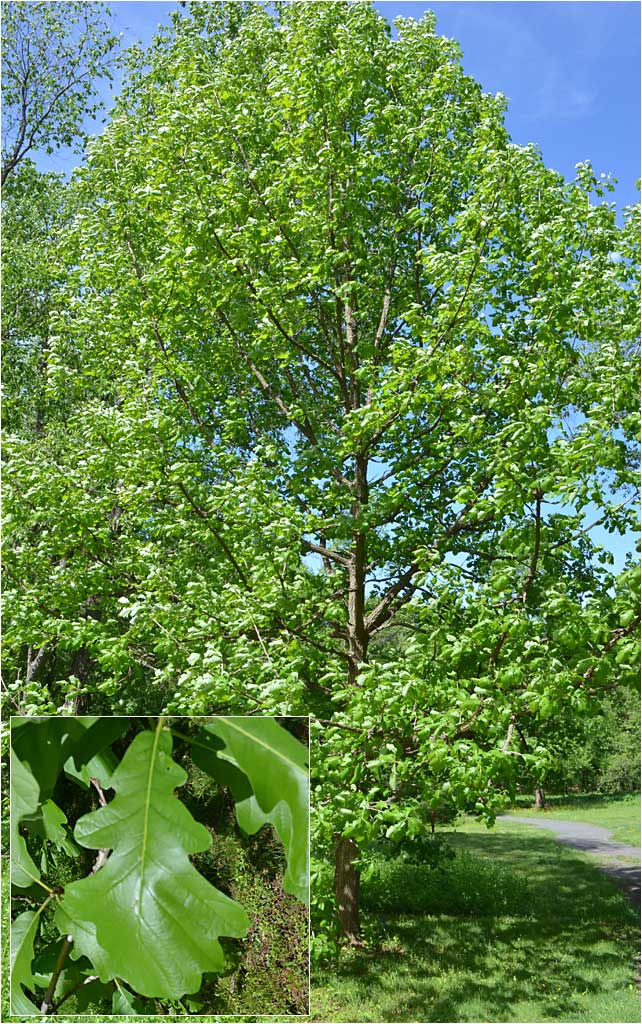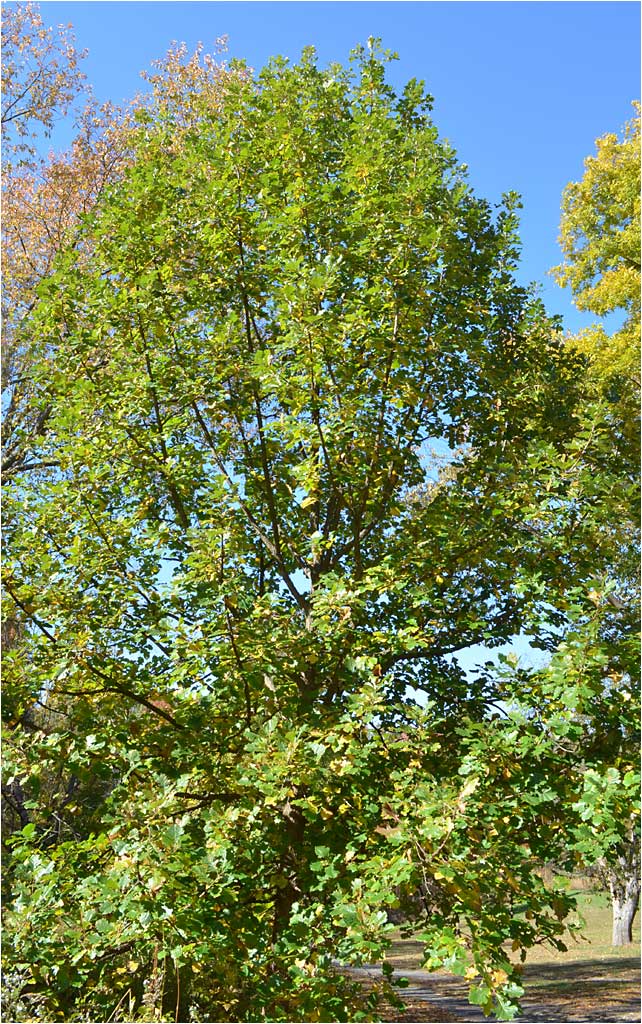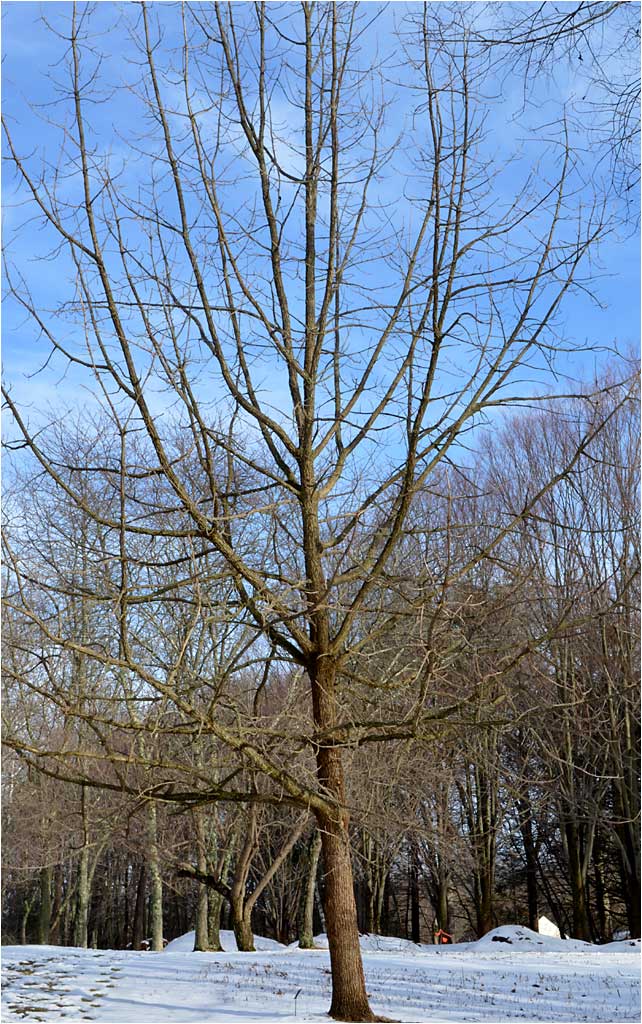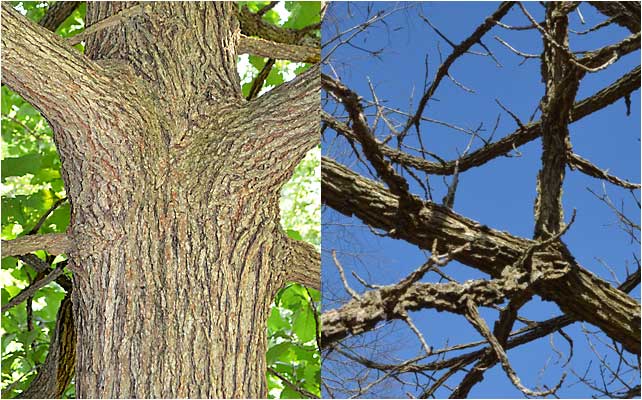45. BURR OAK, Quercus macrocarpa

In Spring, the Burr Oak starts a bit on the late side, but makes up for lost time. Leaves and flowers emerge at roughly the same time. This tree was planted at the Westmoor Arboretum in 2003 by Park Naturalist/Manager Douglas Jackson - and appears to be thriving. Burr Oak is a keystone species for wildlife and Oaks are the #1 species of tree for supporting wildlife (Douglas Tallamy, book: The Nature of Oaks)
SPRING, FLOWERS

The Burr Oak is monecious (M/F flowers on same tree) and the male catkins are very prominent in the Spring (right). The flowers are tiny, with hundreds on each strand, and they produce pollen. Finding the female flowers requires patience and low-hanging trees, and they can be found in the branch axils (junctions). See the two tiny green stalks - they will enlarge a bit and get fertilized to become acorns.
SUMMER, LEAF

The leaf of the Burr Oak is distinctive, but may deviate its form depending on its position on the tree and access to sunlight. Nearly all Oaks do this, so it is important to check out leaves in several places if you are identifying the tree using leaves.
EMERGING ACORN, TERMINAL BUD

While this Oak is just about the age to bear acorns (most Oaks start at age 30, but may start earlier) we see early acorns developing after the Spring flowering season. Even when just emerging we see the cap on the acorn is extensive. This "over-cup" will remain a key feature of the acorn as it matures. The terminal bud (right) is also a key ID reference.
MATURE ACORNS

The younger Burr Oaks near the cabin have started producing acorns of moderate size in 2023 (right). The very mature Burr Oak on the Westmoor private residence produced the big one on left. For comparison, two White Oak acorns are also shown. Burr oaks do produce some of the largest acorns of any Oak and are named for their distinctive cap (said to resemble the burrs on chestnuts). The green fringe will tighten up and get brown. One of the alternate common names for this oak is "Mossy-cup Oak", and it fits.
FALL FOLIAGE

This Burr Oak has yet to dazzle us with fall color (which is sometimes yellow and sometimes just nothing special) but we're watching. Every year.
WINTER HABIT

The Burr Oak has a unique form (called a tree's "habit") which is really apparent in Winter. Once you familiarize yourself with the look of the branches and how they are positioned on the tree, you can spot them from quite a distance away. Beautiful purpose and form.
BARK

Bark on both the bole (trunk) of the tree and on the branches is deeply furrowed and unusual. Combined with the branching habit, this is an easy ID in winter. There are three Burr Oaks in the Park, and there is a second one close to this one in the stand of trees leading to the Cabin.